

Teaching Cause and Effect in Reading and Writing
What is Cause and Effect?

Understanding how cause and effect inform the organisation of a text enhances a student’s ability to fully comprehend what they have read. But, what exactly do we mean when we speak of cause and effect in relation to reading?
Cause is the driving force in the text. It is the reason that things happen. In essence, cause is the thing that makes other things happen. Effect refers to what results. It is what happened next in the text that results from a preceding cause.
To put it concisely, cause is the why something happened, and effect is the what happened. Cause and effect are important elements of a text that help the reader to follow a writer’s line of thought, regardless of whether that text is fiction or nonfiction.
The concept of cause-and-effect relationships is so prevalent in our everyday lives that students are usually quick to pick up on them. They may already display a good implicit understanding of the concepts in their reading and writing. However, the purpose of this article is to make that understanding explicit; to offer a range of strategies that will help students clearly identify the causes and effects that are woven throughout the fabric of the texts they will read.
A Word on Affect and Effect…
When teaching cause and effect, be sure to take the chance to reinforce the difference between the noun ‘effect’ and the verb ‘affect’. No matter how many times students are exposed to this distinction, a few will always manage to avoid learning it. Don’t allow your students to be affected by ignorance of the difference any longer!

WHY TEACH CAUSE AND EFFECT?
Cause and effect in a piece of writing help the reader follow a coherent thread through the material. It also helps the writer engage in the writing process to organize and structure the information into a logical form, such as a cause-and-effect essay.
In fiction, cause and effect help maintain plausibility in plotlines. While things may appear to happen ‘out of a clear blue sky’ in real life, in fiction, there is almost always a reason (the cause) for the things that happen (the effect).
Whether fiction or nonfiction, cause and effect are arranged in such a manner as to show the connections between a result and the events that preceded it. It can be thought of as the ‘problem – solution’ order. It is not merely the staple of the English classroom either but has applications in areas as diverse as science, social studies, history, movies, and computer games etc.
A COMPLETE PREMIUM UNIT FOR TEACHING CAUSE AND EFFECT

This CAUSE AND EFFECT UNIT incorporates several essential ELA SKILLS into an ENGAGING, NO PREP sequence of reading lessons. Covering…
Signal Words and Phrases
Signal words, or transitions, are signposts that help guide the reader through the terrain of the writer’s thoughts. They help connect the ideas in a text or the events in a story. Often they do this by answering implicit questions. In the case of cause and effect, these are the What? of the effect and the Why? of the cause. Different signal words can be used to indicate each. For example:
Cause (The Why)
- As a result of
- As a consequence of
- Now that
Effect (The What)
- This resulted in
- Consequently
- Accordingly
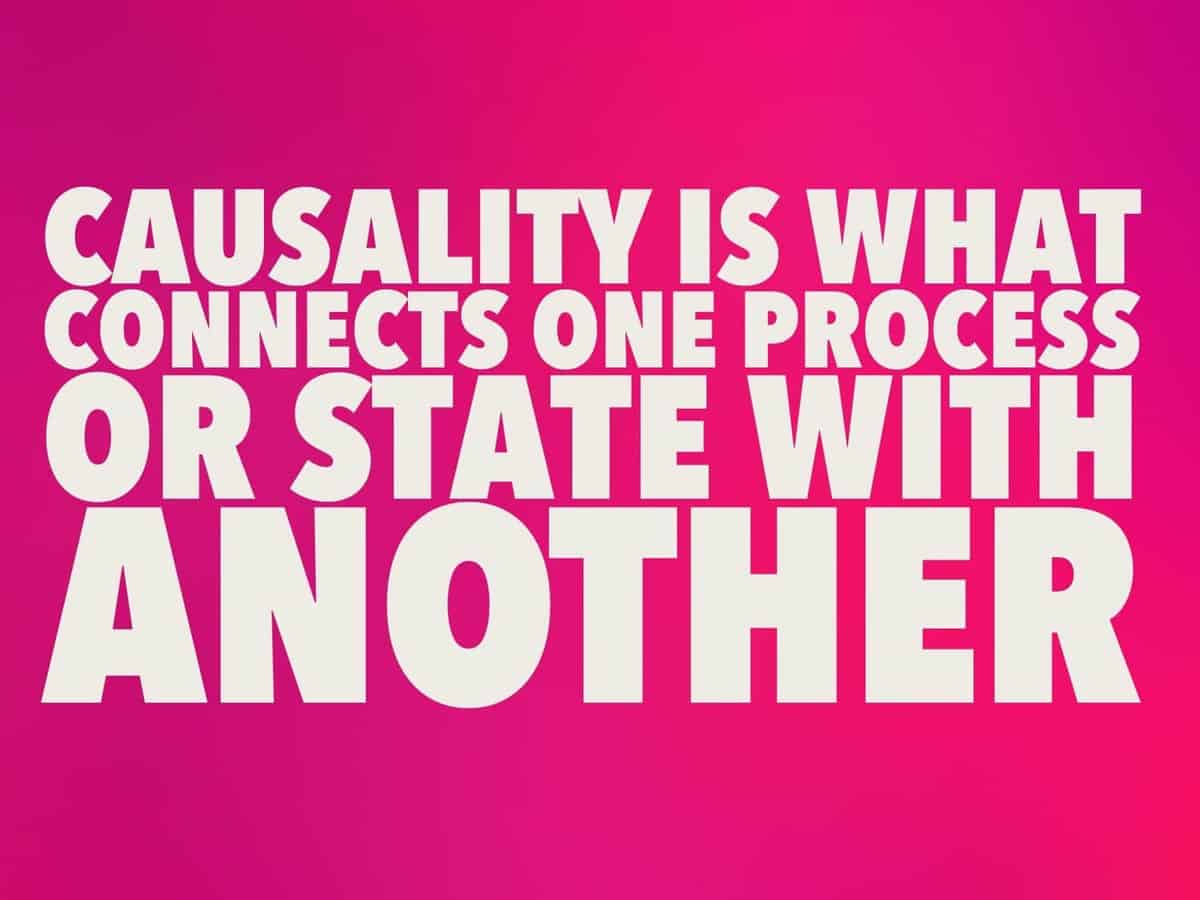
USING CAUSE AND EFFECT GRAPHIC ORGANIZERS

Graphic organizers can be a helpful tool to help students record the cause and effect of a reading passage. Displaying this information visually aides students in identifying and analysing the underlying causes and effects of a series of events or processes.
Two graphic organiser forms can be particularly useful in this role: The Cause and Effect Column Organizer and The Cause and Effect Chain. READ OUR GUIDE TO LITERACY GRAPHIC ORGANIZERS HERE
The Cause and Effect Column Organizer
This simple graphic organizer consists of two columns labelled cause and effect, respectively. Students can record the cause in the left-hand column and the corresponding effect opposite in the right-hand column. This allows students to see the cause and related effects quickly and can serve as a useful study tool to review material.
THE CAUSE AND EFFECT CHAIN
The Cause and Effect Chain is a simple graphic organizer consisting of a series of sequential boxes joined by arrows. Students record events in the boxes to display the relationships between them. As one event occurs we can trace the subsequent event it causes easily. In this way, students can also visually comprehend how effects themselves become causes.
Graphic Organizers for Complex Events
Graphic organizers can also be useful to display complex relationships between events where an event has more than one cause or effect. Students simply add more arrows and boxes to display the relationships between different events. As students become more experienced and sophisticated in their approach, they will be able to tailor individual graphic organizers to meet the needs of the specific reading material they are engaged with.
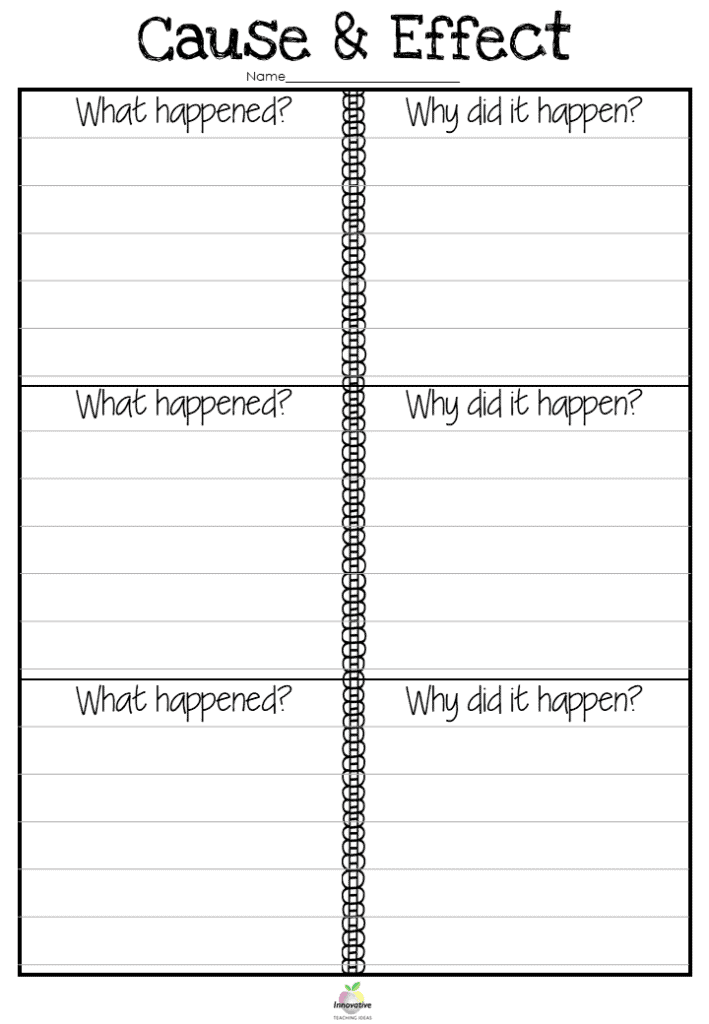
101 DIGITAL & PRINT GRAPHIC ORGANIZERS FOR ALL CURRICULUM AREAS

Introduce your students to 21st-century learning with this GROWING BUNDLE OF 101 EDITABLE & PRINTABLE GRAPHIC ORGANIZERS. ✌ NO PREP REQUIRED!!! ✌ Go paperless, and let your students express their knowledge and creativity through the power of technology and collaboration inside and outside the classroom with ease.
Whilst you don’t have to have a 1:1 or BYOD classroom to benefit from this bundle, it has been purpose-built to deliver through platforms such as ✔ GOOGLE CLASSROOM, ✔ OFFICE 365, ✔ or any CLOUD-BASED LEARNING PLATFORM.
what is a cause and effect? And how to teach it.

Teaching cause and effect begins with defining both terms clearly for the students. Once that is done, students should then be offered ample opportunity to practice this strategy in discrete lessons. These practice sessions should utilize a wide range of reading material in a variety of genres and of various complexities.
The following is a useful template to follow when planning cause and effect focussed lessons in a whole class context.
- First, provide students with an overview of the story detailing the main events. Then, introduce the appropriate graphic organizer for the reading material chosen.
- While reading a text with the class, have students identify the key events or actions in the story.
- Next, students work to determine whether each event or action is a cause or an effect.
- Finally, students record each event or action on the graphic organizer.
Depending on the student’s ability and the text’s sophistication, you may find it appropriate to make links with inference strategies here too.
As a post-reading activity, you may also wish the students to form smaller groups to compare their findings and discuss the reasons for their decisions.
If X, Then Y: Some More Activities for Teaching Cause and Effect
As with all the various reading comprehension strategies, becoming skilled in this area takes time and practice – lots of practice! The following activities will help students practice their cause-and-effect chops. While it is important to provide opportunities for students to learn about cause and effect in discrete lessons, further opportunities to reinforce their understanding will arise in all sorts of lessons. Be sure to take advantage of those opportunities too.
Cause & Effect Cards Activity
Write a series of causes and their related effects on playing-card-sized paper. You can select the causes and effects you use for this activity from a recent story you have worked on together or a process students have been studying in class, reinforcing that learning and the cause and effect reading comprehension strategy itself.
Shuffle the deck of cause and effect cards and then, in groups, have the students play the popular card game ‘Snap’ where a student wins a hand by recognising a matching pair of cause and effect cards and claims them by shouting “Snap!” This simple activity will help students recognize the relationships between events quickly and can be easily differentiated for the varying abilities in the class too. To save on prep time, why not ask students to fill out the cause and effect cards from the information they recorded on their graphic organizers from a previous activity?
Signalling Cause and Effect Activity
This activity works very well for identifying the cause and effect within a single sentence or a few connected sentences. Students find the cause and the effect within a sentence in a reading passage or from a list of example sentences provided by the teacher. Students then record each sentence’s cause and effect onto a worksheet (or underline them in the text). They can also identify signal words and phrases that connect the two and record those on their worksheet.
This activity is effective in helping students recognize the patterns of cause and effect as they are displayed in various sentence structures. It offers students opportunities to familiarize themselves with the various possible transitions in cause-and-effect sentences. This activity can be easily adapted for use with paragraphs and longer extracts too.
In Effect…
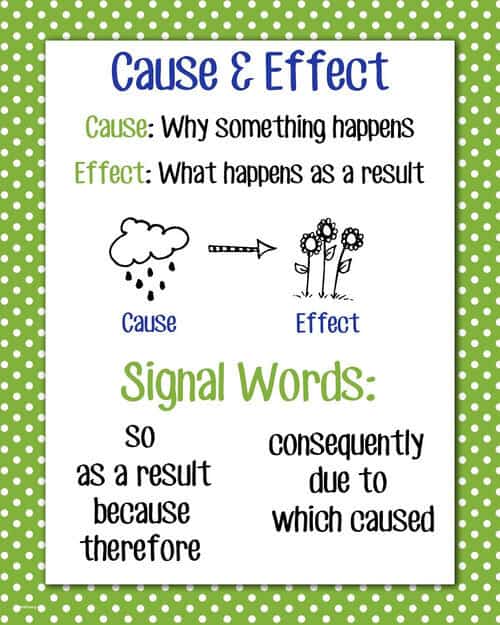
There is no doubt that students must develop their skills in applying this essential reading comprehension strategy to a wide variety of reading material if they are to become effective readers. To do this, they must clearly understand how the concepts of cause and effect are defined in a range of contexts. This can only be achieved through practice. Students should gain experience in identifying the events in a story and then learn to categorize them as either cause or effect. This will not always be a straightforward classification and may require students to draw on other reading strategies to perform this successfully, particularly the skill of inference.
Students should also be encouraged to further understand how cause and effect not only enhance our understanding of a text but allows for information to be organized strategically in a coherent manner that will help with later recall. This understanding can be leveraged as a useful study skill that will reap considerable benefits for the student in all other areas of their studies and beyond. Now, that’s an attractive side-effect for sure!
cause and effect anchor charts and cause and effect diagrams like this are great classroom resources to tap into before writing a how to write a cause and effect essay and understanding a cause-and-effect relationship.
CAUSE AND EFFECT TUTORIAL VIDEO

OTHER GREAT ARTICLES RELATED TO CAUSE AND EFFECT

Top 7 Reading Comprehension Strategies for Students and Teachers

How to teach Guided Reading: Teaching Strategies and Activities
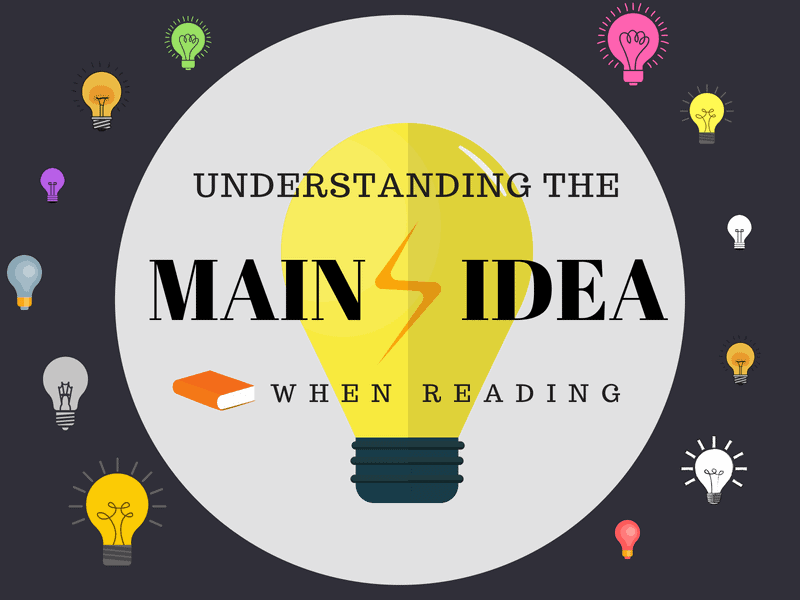
Identifying the main idea of the story: A Guide for Students and Teachers
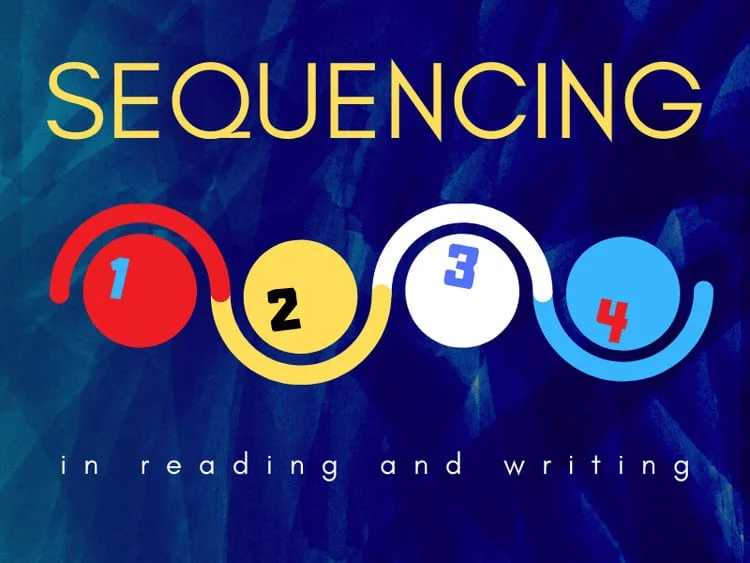
Sequencing events in reading and writing
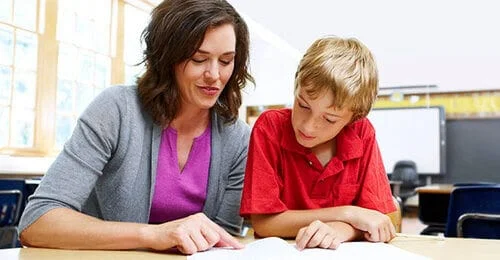
Top 7 Tips for Teaching Guided Reading in Large Classes
ELA Common Core Lesson Plans

- Create Characters Lesson Plan
- Creative Writing Lesson Plan: Using Details
- How to Write a Cause and Effect Essay
- How to Write a Conclusion for an Essay Lesson Plan
- How to Write a Persuasive Essay
- How to Write a Reflective Essay
- How to Write an Article Critique and Review
- How to Write an Introduction to an Essay
- How to Write a Problem Solution Essay
- Lesson Plan: Effective Sentence Structure
- Lesson Plan: Improve Writing Style with Improved Sentence Structure
- Logical Fallacies Lesson Plan with Summary & Examples
- Teaching Active and Passive Voice
- Teaching How to Revise a Rough Draft
- Teaching Instructional Articles: How to Write Instructions
- Teaching Word Choice: Using Strong Verbs
- Using Imagery Lesson Plan
- Writing for Audience and Purpose
- Writing Transitions Lesson
- Analyzing Humor in Literature Lesson Plan
- Analyzing Shakespeare Strategies
- Fun Reading Lesson Plan
- How to Write a Literary Analysis.
- How to Annotate and Analyze a Poem
- Lesson Plan for Teaching Annotation
- Literary Terms Lesson Plan
- Literature Exemplars – Grades-9-10
- Teaching Short Story Elements
- Using Short Stories to Teach Elements of Literature
- Bill of Rights Lesson Plan
- Fun Ideas for Teaching Language
- Comma Rules: How to Use Commas
- Difference between Denotation and Connotation
- Effective Word Choice Lesson Plan
- Fun Grammar Review Game or Vocabulary & Language Arts
- Lesson Plans for Substitute Teachers and Busy English Teachers
- Lesson Plan: Creating the Perfect Title
- 4.08 – Lesson Plan: Using Semicolons Correctly
- Pronoun-Antecedent Agreement Lesson Plan
- Sentence Combining Made Easy Lesson Plan
- Strategies for Teaching Vocabulary
- Using Tone Effectively Lesson Plan
- 4.12 – Word Choice Lesson Plan: Eliminate and Replace “To Be” Verbs
- Using Voice in Writing Effectively Lesson Plan
- Speaking & Listening
- Teacher Guide Central
Why am I failing? Why do I have to go to the Dean’s office? How come I got suspended? How can I avoid getting slapped by the brunette in the third row? Why do we have to do this? Avoid these and other stupid questions by teaching how to write a cause and effect essay.
Need more essay writing lessons for the common core . This guide includes the following:
- How to Write a Problem/Solution Essay
- How to Write a Comparison Essay
- How to Write a Definition Essay
Each lesson contains instructions for writing each type of essay (for your students), a list of common core objectives covered (for your administrator), one or more graphic organizers (for your students), and a rubric to make grading easy (for your sanity).
ELA Common Core Standards
Writing a cause and effect essay accomplishes the following ELA Common Core Standards.
Common Core Writing Standard 1 . Write arguments to support claims in an analysis of substantive topics or texts, using valid reasoning and relevant and sufficient evidence. Common Core Writing Standard 2. Write informative/explanatory texts to examine and convey complex ideas, concepts, and information clearly and accurately through the effective selection, organization, and analysis of content. W.9-10.4 Produce clear and coherent writing in which the development, organization, and style are appropriate to task, purpose, and audience. (Grade-specific expectations for writing types are defined in W.9-10.1-3.) W.9-10.5 Develop and strengthen writing as needed by planning, revising, editing, rewriting, or trying a new approach, focusing on addressing what is most significant for a specific purpose and audience. (Editing for conventions should demonstrate command of L.9-10.1-3.) W.9-10.7 Conduct short as well as more sustained research projects to answer a question (including a self-generated question) or solve a problem; narrow or broaden the inquiry when appropriate; synthesize multiple sources on the subject, demonstrating understanding of the subject under investigation. W.9-10.8 Gather relevant information from multiple authoritative print and digital sources, using advanced searches effectively; assess the usefulness of each source in answering the research question; integrate information into the text selectively to maintain the flow of ideas, avoiding plagiarism and following a standard format for citation.
The Importance of Cause and Effect (Notes)
Exploring cause and effect is critical to understanding life. Knowing how to write a cause and effect essay is crucial for communicating ideas. A successful cause and effect essay does the following:
- clearly identifies the relationship between cause and effect.
- gives background information.
- organizes logically and includes transitions that clarify cause-and-effect relationships. Cause and effect essays can be organized as follows.
- State a cause in the introduction with body paragraphs that discuss the effects. For a paragraph, state the cause in the topic sentence and write about its effects.
- State an effect in the introduction with body paragraphs that discuss the causes. For a paragraph, state the effect in the topic sentence and write about its causes.
4. uses appropriate language and supporting details suited to the intended audience . 5. summarizes the cause and effect relationship in the conclusion.
Prewriting for a Cause and Effect Essay
Think before you write.
- Before committing your thoughts to paper, analyze your assumptions about cause and effect. Are the events really linked by cause and effect or are you jumping to conclusions? Could there be multiple causes or multiple effects? Beware of the cause and effect fallacy — the false assumption that one event caused another simply because it preceded it.
- The audience will determine what background information to include. For example, a cause and effect essay on World War II written for World War II veterans would require far less background information than the same essay written for 20-year old pacifists.
- Gather supporting information. Just because you think so, doesn’t mean it is. Do the required fact checking. Some essays require actual research or interviews; others may just require personal observation, reflection, and common sense.
- Outline your ideas. The best way to organize cause and effect writing is a web diagram.
- Draw a circle in the middle of your paper.
- Write either the cause or the effect. Writing the exact thesis statement is best.
- Draw lines from the center circle to at least three orbiting circles.
- Write either the causes or the effects, depending on how the essay is organized.
Drafting and Revising the Essay
A good outline and thorough research (if necessary) makes drafting the essay a breeze. Consider the following as you write.
- Be sure to clearly state the cause and effect relationship that’s being explored. This should be the thesis statement.
- Use facts, statistics, examples, quotations, logic, reasoning, analysis, and interpretation for support.
- When revising, answer the following questions.
- How would you summarize the cause and effect relationship presented in the essay?
- What evidence most strongly supports the thesis statement? What evidence is weakest?
- Which parts could use clarification?
4. Be sure to use cause and effect transitions: if…then, because, as a result, consequently, therefore , etc.
Types of Essays
Step-by-step instructions for writing different types of essays can be accessed by the following links.
- Problem-Solution Essay
- Persuasive Essay
- Narrative Essay
- Instructional Article
- Literary Analysis
- How to Write a Tall-Tale
- How to Write an Article Critique
- Cause and Effect Essay
Last Updated on October 20, 2017 by Trenton Lorcher
Get 5 Short Story Lesson Plans Now!
We specialize in teacher-ready lesson plans.
I will never give away, trade or sell your email address. You can unsubscribe at any time.
Return to top of page
Copyright © 2024 | By: WebsiteRedesign.nz
Your browser is not supported
Sorry but it looks as if your browser is out of date. To get the best experience using our site we recommend that you upgrade or switch browsers.
Find a solution
- Skip to main content
- Skip to navigation
- Macmillan English
- Onestopenglish
- Digital Shop

- Back to parent navigation item
- Sample material
- Amazing World of Animals
- Amazing World of Food
- Arts and Crafts
- Mathematics
- Transport and Communication
- Teaching Tools
- Sustainable Development and Global Citizenship
- Support for Teaching Children
- Vocabulary & Phonics
- Spelling Bee Games
- Phonics & Sounds
- The Alphabet
- Onestop Phonics: The Alphabet
- Alphabet Booklet
- Interactive Flashcards
- Warmers & Fillers
- Young Learner Games
- Stories and Poems
- Fillers & Pastimes
- Fun Fillers
- Ready for School!
- Topics & Themes
- Young Learner Topics
- Young Learner Festivals
- Festival Worksheets
- Art and Architecture
- Business and Tourism
- Geography and the Environment
- Information Technology
- Science and Nature
- Topic-based Listening Lessons
- Cambridge English
- Cambridge English: Preliminary (PET)
- Cambridge English: First (FCE)
- Cambridge English: Proficiency (CPE)
- Cambridge English: Advanced (CAE)
- General English
- News Lessons
- Topics and Themes
- Beyond (BrE)
- Beyond: Arts and Media
- Beyond: Knowledge
- Go Beyond (AmE)
- Go Beyond: Arts & Media
- Go Beyond: Knowledge
- Impressions
- Macmillan Readers
- A Time to Travel
- Life & School
- Skills for Problem Solving
- Digital Skills for Teens
- Support for Teaching Teenagers
- Games Teaching Materials
- Business and ESP
- Business Lesson Plans
- Business Skills Bank
- Business Top Trumps
- Elementary Business Lessons
- HR Management
- Business News Lessons
- ESP Lesson Plans
- Career Readiness
- Professional Communication Skills
- Cambridge English: Business (BEC)
- Everyday Life
- Celebrations
- Live from...
- Live from London
- Discussion Cards
- Writing Lesson Plans
- Life Skills
- Support for Teaching Adults
- Vocabulary Lesson Plans
- Language for...
- Vocabulary Teaching Materials
- Macmillan Dictionary Blog
- Vocabulary Infographics
- Kahoot! Quizzes
- Blog Articles
- Professional Development
- Lesson Share
- Methodology: Projects and Activities
- Methodology: Tips for Teachers
- Methodology: The World of ELT
- Advancing Learning
- Online Teaching
- More from navigation items
Writing skills
- 1 Writing skills
- 2 Writing: A class or company newsletter
- 3 Writing skills: advertising
- 4 Writing skills: Cause and effect
- 5 Writing skills: Fables
- 6 Writing skills: formal and informal writing
- 7 Writing skills: Letter of complaint
- 8 Writing skills: Mini saga
- 9 Writing skills: news story
- 10 Writing skills: statistical report
- 11 Writing skills: Thinking about writing
Writing skills: Cause and effect
By Lexy Holt
- No comments
To bring attention to the need for lexical variation in a good essay and to increase range of cause and effect phrases and topic related vocabulary.
- To bring attention to the need for lexical variation in a good essay.
- To increase range of cause and effect phrases and topic related vocabulary.
- To provide a lexical resource for future essay writing.
Target language
Cause and effect so/ As a result/ are due to/The consequence of/ Owing to/one effect of/ This is because/ as/ Hence/ consequently/ The effect of/ consequent (levels)/ therefore/ (creates)/ As a result/ For this reason/ Thus/ as a consequence
Lexical variation Population/( uninhabitable)/ overcrowding/ teeming with people/ inhabitants/ too dense a population/ over peopled/ crowded with people/ crawling with cars/ overpopulation/ epidemic of people/ most populous nation/ overcrowded
Time: 1 hour plus writing task for homework
Materials (see attached)
- Cards (cut up one card for each student)
- Prediction task (one copy on an OHP or one copy between two)
- Reorder following sentences (one copy each)
- Analysis worksheet (one copy each)
- Vocabulary extension worksheet (one copy each)
- Homework sheet (one copy each)
- Model essay – Answer Key (one copy each)
Lesson steps
- As a warm-up exercise, give one card, from ‘Cards’, to each student. (Make sure you are using matching cause and effects). Tell students to mill until they have found their partner. (5 minutes)
- Tell the new pairs to then sit down and connect their sentences by introducing a phrase which expresses the relationship of cause and effect. (5 minutes)
- Pairs read out their sentences and the teacher marks up cause and effect phrases on the board as they come up. (5 minutes)
- Tell the class they are now going to read some sentences which use (hopefully) some different cause and effect phrases. They are taken from an essay entitled ‘Describe some of the problems caused by overcrowding in modern cities’ and write this title on the board. (2 minutes)
- Put ‘Prediction task‘ on the OHP (alternatively give out one copy between two) and cover over all but the top unfinished sentence. Students guess the ending, shout out their answers and the nearest answer gets a point/ sweet/ counter etc. (15 minutes)
- Explain again that the prediction task comes from the essay on the board and give out ‘Reorder the following sentences‘ and the ‘Analysis worksheet‘ to complete individually. Explain that in writing such an essay you need to list a lot of problems of a single cause (overcrowding) so a lot of cause and effect phrases are needed. Also you would need a lot of words which function as an alternative to the topic word, in this case, ‘overcrowding’. (15 minutes)
- Be available to help as the students work through the worksheet. Give out ‘Model essay – Answer Key ‘ and allow students to check through it quickly before looking at it as a class (see teachers’ notes.) (10)
- Give out ‘Vocabulary extension worksheet ‘ explaining that the words on the sheet come from other common essay themes, one of which they will write an essay on for homework. You could work through this as a class, answering questions about the slight differences in meaning, in order to keep the pace up and finish on a chatty note. (5)
- Give out ‘Homework sheet ‘ for homework.
Teacher's notes (numbers correspond to lesson steps above)
- If your class doesn’t like moving around, give each pair a complete set of jumbled cards to match up. However, still limit one sentence to each pair for connecting them with a phrase.
- Some students’ written work lacks coherence because of a paucity of cause and effect in their ideas. This step will help focus these students on the need to use clear connections in their written work.
- The idea here is that if you make the introduction of these phrases fun, students will have a better chance of remembering them (step six gives further comprehension and analytical focus on the target phrases) .
- And 8) are simply to prepare for written homework so keep the pace relaxed and chatty and reiterate that the point of their homework is to produce a piece of writing that has a good range of topic vocabulary and cause and effect phrases.
These materials are prepared by Lexy Holt a former winner of the Lesson share competition.
Writing skills: cause and effect
- British English
- Geography & Places
- Intermediate
- Language / Skill
- Lesson Plan / Teacher's Notes
- Printable Worksheet
- Sentence structure
- Teaching Notes
- Upper-Intermediate
Writing: A class or company newsletter
Writing skills: advertising.

Writing skills: Fables

Writing skills: formal and informal writing
Writing skills: letter of complaint.

Writing skills: Mini saga
Writing skills: news story, writing skills: statistical report.

Writing skills: Thinking about writing
Related articles.


Will other cities copy Paris decision to hike parking charges for SUVs?
By Tim Bowen
SUVs have become a trend in cities around the world. Should they be banned from crowded city centres?

‘I was thrilled and shocked’: images raise hopes of return of wild jaguars to the US
By Jennifer Cantave
Jaguars were believed to be extinct, but recent sightings in the US have given hope to animal conservationists.

Interactive Flashcards: Spring Animals
Introduce your students to the vocabulary they need to talk about different animals usually related to spring with this set of Interactive Flashcards.
No comments yet
Only registered users can comment on this article., more from writing.
By Karen Richardson
In this lesson by Karen Richardson, students work collaboratively to produce a class newsletter.
By Adrian Tennant
This lesson looks at a few techniques for ‘thinking’ about writing. There are 3 tasks: brainstorming, loop writing and speed writing.
By Jackie McAvoy
To enable students to break down the different features of formal and informal English by working through a step-by-step text transformation at their own pace.
Join onestopenglish today
With more than 700,000 registered users in over 100 countries around the world, Onestopenglish is the number one resource site for English language teachers, providing access to thousands of resources, including lesson plans, worksheets, audio, video and flashcards.
- Connect with us on Facebook
- Connect with us on Twitter
- Connect with us on Youtube
Onestopenglish is a teacher resource site, part of Macmillan Education, one of the world’s leading publishers of English language teaching materials.
- Privacy Policy
- Cookie policy
- Manage cookies
©Macmillan Education Limited 2023. Company number: 1755588 VAT number: 199440621
Site powered by Webvision Cloud
The Day Jimmy's Boa Taught Cause and Effect

- Resources & Preparation
- Instructional Plan
- Related Resources
This lesson introduces the concept of cause and effect with Trinka Hakes Noble's books about Jimmy and his boa constrictor. Each lesson begins with the teacher reading a new story about Jimmy and his boa and the chaos they bring to each place they visit. Class discussions about each event and its cause are followed by tasks for the students to help illustrate understanding of the concept. Students create cause-and-effect pictures, puzzles, and flow charts as they explore the genre. As a culminating activity, students write their own book with causes and effects, which are assessed with a rubric.
Featured Resources
- Causes and Effects in the Jimmy's Boa Books : This chart provides a handy guide to cause and effect in Noble's books.
- Book Rough Draft : Students use this graphic organizer to plan their cause and effect book.
- Book Handout : This page provides a place for students to draw a picture of the cause and the effect, as well as writing line for text.
From Theory to Practice
Providing opportunities to learn concepts from a variety of pieces of literature is an important part of language arts instruction. Integrated language arts instruction is usually centered on a language process or a literary text. This integration engages students and helps create meaningful learning experiences. In a study comparing a basal-only reading program and a program with integrated language arts, results indicated that an integrated reading program promoted better readers. The students from the integrated program "read more, had higher scores in story retellings, had higher comprehension scores, and created more original stories, all at no cost to performance on standardized tests." This research emphasizes the importance of integrating a variety of literature within reading programs. This lesson builds on the ideas in the research by using a number of Jimmy's Boa books to explore the concept of cause and effect.
Further Reading
Common Core Standards
This resource has been aligned to the Common Core State Standards for states in which they have been adopted. If a state does not appear in the drop-down, CCSS alignments are forthcoming.
State Standards
This lesson has been aligned to standards in the following states. If a state does not appear in the drop-down, standard alignments are not currently available for that state.
NCTE/IRA National Standards for the English Language Arts
- 3. Students apply a wide range of strategies to comprehend, interpret, evaluate, and appreciate texts. They draw on their prior experience, their interactions with other readers and writers, their knowledge of word meaning and of other texts, their word identification strategies, and their understanding of textual features (e.g., sound-letter correspondence, sentence structure, context, graphics).
- 5. Students employ a wide range of strategies as they write and use different writing process elements appropriately to communicate with different audiences for a variety of purposes.
Materials and Technology
- The Day Jimmy's Boa Ate the Wash
- Jimmy's Boa Bounces Back
- Jimmy's Boa and the Big Splash Birthday Bash
- Jimmy's Boa and the Bungee Jump Slam Dunk
- Blank paper folded in half
- Chart paper
- Crayons, markers, and colored pencils for illustrating
- Causes and Effects in the Jimmy's Boa Books
- Jimmy's Boa and the Big Splash Birthday Bash Puzzle
- Flowchart Handout
- Book Rough Draft handout
- Book Handout
- Book Rubric
- Student Checklist
Preparation
- Read through each of the books before the class sessions to help with oral reading and full understanding of each cause and effect.
- Print the Causes and Effects in the Jimmy's Boa Books handout for reference during lessons.
- Print Jimmy's Boa and the Big Splash Birthday Bash Puzzle , and cut into squares (enough pieces for 20 students).
- Print and copy the following handouts: Flow Chart Handout , Book Rough Draft Handout , Book Rubric , and Student Checklist handout. Make at least three copies of the Book Handout for each student to use for the final text of the books.
- Test the Book Cover Creator on your computers to familiarize yourself with the tool and ensure that you have the Flash plug-in installed. You can download the plug-in from the technical support page.
Student Objectives
Students will:
- participate in class discussions about cause and effect during oral reading.
- draw pictures illustrating cause-and-effect examples from texts.
- illustrate examples of cause and effect.
- write their own examples of cause and effect.
- create their own cause-and-effect book and book cover.
Session One
- Introduce the book The Day Jimmy's Boa Ate the Wash . Point out that there are sometimes only a few words on the pages, so students will have to pay close attention to the illustrations.
- Read The Day Jimmy's Boa Ate the Wash aloud to the class. Make sure all the students can see the book and each page's illustrations.
- While reading the story, ask the students what is happening and why each event occurred. For example: Why did the farmer crash into the haystack? Why were the pigs on the bus? Why were they eating the lunches?
- After the story, list some of the events in the story on the board or chart paper. For example: The children threw corn. The chicken got excited and laid an egg. The farmer's wife was screaming.
- Ask students what caused these events. (e.g., They ran out of eggs. Jimmy's boa scared the chickens. The boa was in the laundry.) Add these causes to the board or chart paper before the events.
- Introduce the vocabulary term cause and effect . Explain that a cause is what makes something happen, and label the first column causes . Explain that each cause has an effect, or what happened, and label the second column effects .
- Model how to draw a cause-and-effect picture on the board or chart paper. Draw the cause in the first box and the effect in the next one.
- Pass out blank paper for students to fold in half and label "cause and effect."
- Ask students to pick any event from the story and draw its cause and effect.
- Monitor students' pictures for understanding of cause and effect.
Session Two
- Review the book about Jimmy and his boa that you read during the previous session and the terms cause and effect that the class discussed.
- Introduce Jimmy's Boa Bounces Back . Ask students what normally happens at a garden party. If students are unfamiliar with the idea of garden parties, share details on what happens with the class.
- Next ask students to predict what will happen when Jimmy and his boa attend a garden party.
- Ask students to pay close attention to the pictures and the names in this story.
- Read Jimmy's Boa Bounces Back aloud to the class. Make sure all the students can see the book and each page's illustrations.
- While reading the book, ask students about the cause and effect. Use the terms cause and effect , and ask students to use them also. For example, instead of asking, "How did Mrs. Rosebud lose her wig," ask "What effect does Miss Ivy's fainting have?"
- Discuss whether the events in Jimmy's books are real (reality) or make-believe (fantasy).
- Ask students if they can think of some real causes and effects that have happened to them.
- Review cause and effect and discuss real-life examples. Ask students what happens when they oversleep or what happens when they study hard for a test.
- List the examples on the board or chart paper in cause-and-effect columns. Ask students for more examples and add them to the list as well.
- Explain that today students will be creating a flow chart that shows the order in which the events happen.
- Have students pick a real-life example and use the Flow Chart Handout to explore the cause and an effect for the example.
- Monitor students' flow charts and make sure that the causes are recorded before the effects on the handout.
Session Three
- Introduce Jimmy's Boa and the Big Splash Birthday Bash .
- Read Jimmy's Boa and the Big Splash Birthday Bash aloud to the class. Make sure all the students can see the book and each page's illustrations.
- What caused Jimmy to put his goldfish on the railing?
- What was the cause for the children diving in the tank?
- What caused the sharks to get angry with the seals?
- Review the fact that each event has a cause and the result is called the effect.
- Explain that you have a puzzle of events from the story Jimmy's Boa and the Big Splash Birthday Bash , but all the events are out of order.
- Pass out the puzzle , and ask students to illustrate them before the whole class puts the puzzle together.
- Once students finish illustrating their puzzle pieces, put the events in order as a class. Ask the student with the first cause to go first and then ask the class, "Who has the effect?"
- Put the puzzles on the board as the class figures out the order of the events.
- Discuss how the effect can also be the cause of another event.
- If possible, display the class puzzle in the classroom or outside the class for students to refer to later.
Session Four
- Introduce Jimmy's Boa and the Bungee Jump Slam Dunk . Explain that this book is more challenging than the other Jimmy books you have read, and challenge students to pay close attention in order to find the causes and effects.
- Read Jimmy's Boa and the Bungee Jump Slam Dunk aloud to the class. Make sure all the students can see the book and each page's illustrations.
- Jimmy dances with his boa. What is the effect?
- The bunnies came into the gym. What was the cause?
- Explain that each book the class has read was about a girl coming home and explaining her day to her mother or to a friend. The students will be creating their own story to tell their parents or friends. The story can be a real life example or make-believe like Jimmy's.
- Brainstorm examples of both fantasy and reality, and write the ideas on the board or chart paper.
- Have students begin a rough draft of their story using the Rough Draft Handout . The rough draft will be a flow chart of three causes and effects. Students will do a quick drawing in each box to plan their story.
- Monitor the students' Rough Draft Handouts to make sure the causes and effects are in correct order and make sense.
Session Five
- Before the lesson, look over the students' rough drafts to check for understanding and make sure their causes and effects make sense.
- Review the previous session and model the expectations for this session, explaining that today students will make their rough drafts into a story.
- Model how students will take their rough draft and make it a book, using copies of the Book Handout .
- Model how to write the sentence explaining the pictures first and then go back and add illustrations.
- Review the Checklist and the Rubric that will be used to grade each book with students. Discuss what students need to pay attention to while creating their books.
- Have students write sentences for each box.
- Ask students to make a pencil sketch for each illustration.
- Have students add color to their illustrations.
- Monitor students and remind them of the order in which they should be working and the points they will be graded upon.
- When students complete their cause-and-effect pages, use ReadWriteThink's Book Cover Creator to create covers for their work.
- Students who finish early can try this The Day Jimmy's Boa Ate the Wash crossword puzzle .
- PBS Reading Rainbow offers an edible haystack snack recipe to go with The Day Jimmy's Boa Ate the Wash . Students will enjoy eating this treat after reading the exciting story of Jimmy's boa and his day at the farm.
- Extend your study of the Jimmy's Boa books by exploring information about the author, boa constrictors, and other related topics from The Day Jimmy's Boa Ate the Wash Hotlist of Internet Activities .
- Continue your study of cause and effect with the ReadWriteThink lesson Integrating Language Arts Using If You Give a Mouse a Cookie , which uses the book If You Give a Mouse a Cookie to teach the concept of cause and effect.
Student Assessment / Reflections
- Use the Book Rubric to assess students’ original cause and effect books.
- Calendar Activities
- Student Interactives
- Lesson Plans
The Book Cover Creator is designed to allow users to type and illustrate front book covers, front and back covers, and full dust jackets. Students can use the tool to create new covers for books that they read as well as to create covers for books they write individually or as a class.
Add new comment
- Print this resource
Explore Resources by Grade
- Kindergarten K

Baltimore bridge collapse: a bridge engineer explains what happened, and what needs to change
Associate Professor, Civil Engineering, Monash University
Disclosure statement
Colin Caprani receives funding from the Department of Transport (Victoria) and the Level Crossing Removal Project. He is also Chair of the Confidential Reporting Scheme for Safer Structures - Australasia, Chair of the Australian Regional Group of the Institution of Structural Engineers, and Australian National Delegate for the International Association for Bridge and Structural Engineering.
Monash University provides funding as a founding partner of The Conversation AU.
View all partners
When the container ship MV Dali, 300 metres long and massing around 100,000 tonnes, lost power and slammed into one of the support piers of the Francis Scott Key Bridge in Baltimore, the bridge collapsed in moments . Six people are presumed dead, several others injured, and the city and region are expecting a months-long logistical nightmare in the absence of a crucial transport link.
It was a shocking event, not only for the public but for bridge engineers like me. We work very hard to ensure bridges are safe, and overall the probability of being injured or worse in a bridge collapse remains even lower than the chance of being struck by lightning.
However, the images from Baltimore are a reminder that safety can’t be taken for granted. We need to remain vigilant.
So why did this bridge collapse? And, just as importantly, how might we make other bridges more safe against such collapse?
A 20th century bridge meets a 21st century ship
The Francis Scott Key Bridge was built through the mid 1970s and opened in 1977. The main structure over the navigation channel is a “continuous truss bridge” in three sections or spans.
The bridge rests on four supports, two of which sit each side of the navigable waterway. It is these two piers that are critical to protect against ship impacts.
And indeed, there were two layers of protection: a so-called “dolphin” structure made from concrete, and a fender. The dolphins are in the water about 100 metres upstream and downstream of the piers. They are intended to be sacrificed in the event of a wayward ship, absorbing its energy and being deformed in the process but keeping the ship from hitting the bridge itself.

The fender is the last layer of protection. It is a structure made of timber and reinforced concrete placed around the main piers. Again, it is intended to absorb the energy of any impact.
Fenders are not intended to absorb impacts from very large vessels . And so when the MV Dali, weighing more than 100,000 tonnes, made it past the protective dolphins, it was simply far too massive for the fender to withstand.
Read more: I've captained ships into tight ports like Baltimore, and this is how captains like me work with harbor pilots to avoid deadly collisions
Video recordings show a cloud of dust appearing just before the bridge collapsed, which may well have been the fender disintegrating as it was crushed by the ship.
Once the massive ship had made it past both the dolphin and the fender, the pier – one of the bridge’s four main supports – was simply incapable of resisting the impact. Given the size of the vessel and its likely speed of around 8 knots (15 kilometres per hour), the impact force would have been around 20,000 tonnes .
Bridges are getting safer
This was not the first time a ship hit the Francis Scott Bridge. There was another collision in 1980 , damaging a fender badly enough that it had to be replaced.
Around the world, 35 major bridge collapses resulting in fatalities were caused by collisions between 1960 and 2015, according to a 2018 report from the World Association for Waterborne Transport Infrastructure. Collisions between ships and bridges in the 1970s and early 1980s led to a significant improvement in the design rules for protecting bridges from impact.

Further impacts in the 1970s and early 1980s instigated significant improvements in the design rules for impact.
The International Association for Bridge and Structural Engineering’s Ship Collision with Bridges guide, published in 1993, and the American Association of State Highway and Transporation Officials’ Guide Specification and Commentary for Vessel Collision Design of Highway Bridges (1991) changed how bridges were designed.
In Australia, the Australian Standard for Bridge Design (published in 2017) requires designers to think about the biggest vessel likely to come along in the next 100 years, and what would happen if it were heading for any bridge pier at full speed. Designers need to consider the result of both head-on collisions and side-on, glancing blows. As a result, many newer bridges protect their piers with entire human-made islands.
Of course, these improvements came too late to influence the design of the Francis Scott Key Bridge itself.
Lessons from disaster
So what are the lessons apparent at this early stage?
First, it’s clear the protection measures in place for this bridge were not enough to handle this ship impact. Today’s cargo ships are much bigger than those of the 1970s, and it seems likely the Francis Scott Key Bridge was not designed with a collision like this in mind.
So one lesson is that we need to consider how the vessels near our bridges are changing. This means we cannot just accept the structure as it was built, but ensure the protection measures around our bridges are evolving alongside the ships around them.

Second, and more generally, we must remain vigilant in managing our bridges. I’ve written previously about the current level of safety of Australian bridges, but also about how we can do better.
This tragic event only emphasises the need to spend more on maintaining our ageing infrastructure. This is the only way to ensure it remains safe and functional for the demands we put on it today.
- Engineering
- Infrastructure
- Urban infrastructure
- container ships
- Baltimore bridge collapse

School of Social Sciences – Public Policy and International Relations opportunities

School of Social Sciences – Human Geography opportunities

School of Social Sciences – Criminology opportunities

School of Social Sciences – Academic appointment opportunities

Biocloud Project Manager - Australian Biocommons
What to know about the crisis of violence, politics and hunger engulfing Haiti
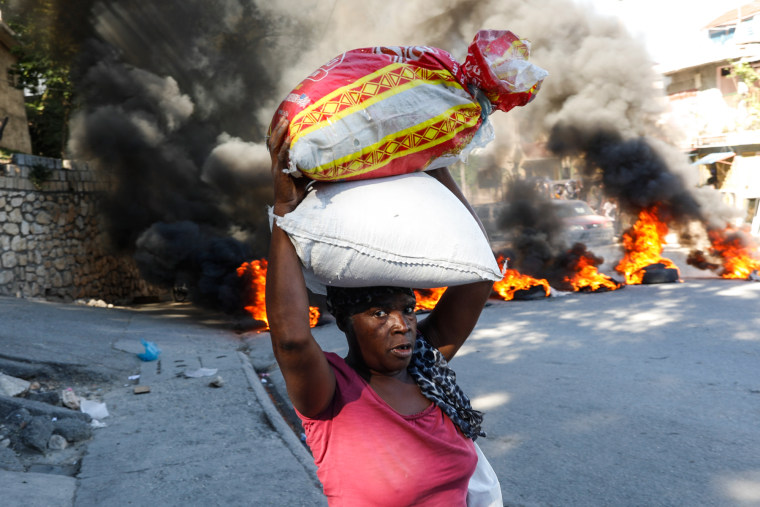
A long-simmering crisis over Haiti’s ability to govern itself, particularly after a series of natural disasters and an increasingly dire humanitarian emergency, has come to a head in the Caribbean nation, as its de facto president remains stranded in Puerto Rico and its people starve and live in fear of rampant violence.
The chaos engulfing the country has been bubbling for more than a year, only for it to spill over on the global stage on Monday night, as Haiti’s unpopular prime minister, Ariel Henry, agreed to resign once a transitional government is brokered by other Caribbean nations and parties, including the U.S.
But the very idea of a transitional government brokered not by Haitians but by outsiders is one of the main reasons Haiti, a nation of 11 million, is on the brink, according to humanitarian workers and residents who have called for Haitian-led solutions.
“What we’re seeing in Haiti has been building since the 2010 earthquake,” said Greg Beckett, an associate professor of anthropology at Western University in Canada.
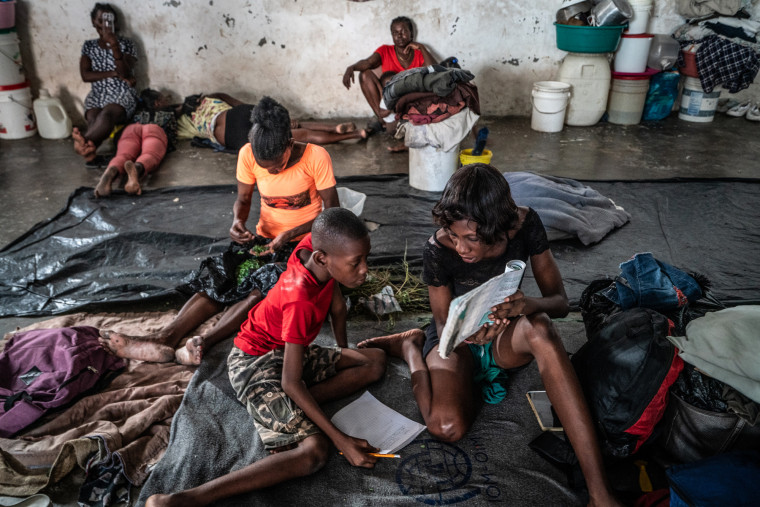
What is happening in Haiti and why?
In the power vacuum that followed the assassination of democratically elected President Jovenel Moïse in 2021, Henry, who was prime minister under Moïse, assumed power, with the support of several nations, including the U.S.
When Haiti failed to hold elections multiple times — Henry said it was due to logistical problems or violence — protests rang out against him. By the time Henry announced last year that elections would be postponed again, to 2025, armed groups that were already active in Port-au-Prince, the capital, dialed up the violence.
Even before Moïse’s assassination, these militias and armed groups existed alongside politicians who used them to do their bidding, including everything from intimidating the opposition to collecting votes . With the dwindling of the country’s elected officials, though, many of these rebel forces have engaged in excessively violent acts, and have taken control of at least 80% of the capital, according to a United Nations estimate.
Those groups, which include paramilitary and former police officers who pose as community leaders, have been responsible for the increase in killings, kidnappings and rapes since Moïse’s death, according to the Uppsala Conflict Data Program at Uppsala University in Sweden. According to a report from the U.N . released in January, more than 8,400 people were killed, injured or kidnapped in 2023, an increase of 122% increase from 2022.
“January and February have been the most violent months in the recent crisis, with thousands of people killed, or injured, or raped,” Beckett said.

Armed groups who had been calling for Henry’s resignation have already attacked airports, police stations, sea ports, the Central Bank and the country’s national soccer stadium. The situation reached critical mass earlier this month when the country’s two main prisons were raided , leading to the escape of about 4,000 prisoners. The beleaguered government called a 72-hour state of emergency, including a night-time curfew — but its authority had evaporated by then.
Aside from human-made catastrophes, Haiti still has not fully recovered from the devastating earthquake in 2010 that killed about 220,000 people and left 1.5 million homeless, many of them living in poorly built and exposed housing. More earthquakes, hurricanes and floods have followed, exacerbating efforts to rebuild infrastructure and a sense of national unity.
Since the earthquake, “there have been groups in Haiti trying to control that reconstruction process and the funding, the billions of dollars coming into the country to rebuild it,” said Beckett, who specializes in the Caribbean, particularly Haiti.
Beckett said that control initially came from politicians and subsequently from armed groups supported by those politicians. Political “parties that controlled the government used the government for corruption to steal that money. We’re seeing the fallout from that.”

Many armed groups have formed in recent years claiming to be community groups carrying out essential work in underprivileged neighborhoods, but they have instead been accused of violence, even murder . One of the two main groups, G-9, is led by a former elite police officer, Jimmy Chérizier — also known as “Barbecue” — who has become the public face of the unrest and claimed credit for various attacks on public institutions. He has openly called for Henry to step down and called his campaign an “armed revolution.”
But caught in the crossfire are the residents of Haiti. In just one week, 15,000 people have been displaced from Port-au-Prince, according to a U.N. estimate. But people have been trying to flee the capital for well over a year, with one woman telling NBC News that she is currently hiding in a church with her three children and another family with eight children. The U.N. said about 160,000 people have left Port-au-Prince because of the swell of violence in the last several months.
Deep poverty and famine are also a serious danger. Gangs have cut off access to the country’s largest port, Autorité Portuaire Nationale, and food could soon become scarce.
Haiti's uncertain future
A new transitional government may dismay the Haitians and their supporters who call for Haitian-led solutions to the crisis.
But the creation of such a government would come after years of democratic disruption and the crumbling of Haiti’s political leadership. The country hasn’t held an election in eight years.
Haitian advocates and scholars like Jemima Pierre, a professor at the University of British Columbia, Vancouver, say foreign intervention, including from the U.S., is partially to blame for Haiti’s turmoil. The U.S. has routinely sent thousands of troops to Haiti , intervened in its government and supported unpopular leaders like Henry.
“What you have over the last 20 years is the consistent dismantling of the Haitian state,” Pierre said. “What intervention means for Haiti, what it has always meant, is death and destruction.”
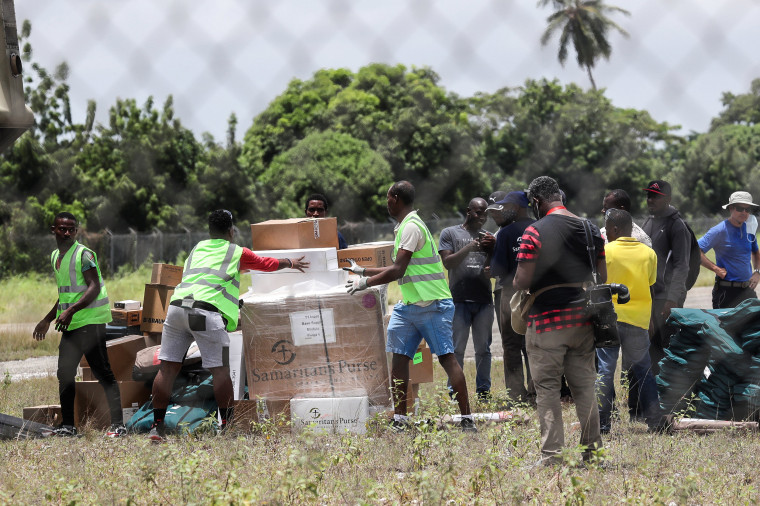
In fact, the country’s situation was so dire that Henry was forced to travel abroad in the hope of securing a U.N. peacekeeping deal. He went to Kenya, which agreed to send 1,000 troops to coordinate an East African and U.N.-backed alliance to help restore order in Haiti, but the plan is now on hold . Kenya agreed last October to send a U.N.-sanctioned security force to Haiti, but Kenya’s courts decided it was unconstitutional. The result has been Haiti fending for itself.
“A force like Kenya, they don’t speak Kreyòl, they don’t speak French,” Pierre said. “The Kenyan police are known for human rights abuses . So what does it tell us as Haitians that the only thing that you see that we deserve are not schools, not reparations for the cholera the U.N. brought , but more military with the mandate to use all kinds of force on our population? That is unacceptable.”
Henry was forced to announce his planned resignation from Puerto Rico, as threats of violence — and armed groups taking over the airports — have prevented him from returning to his country.
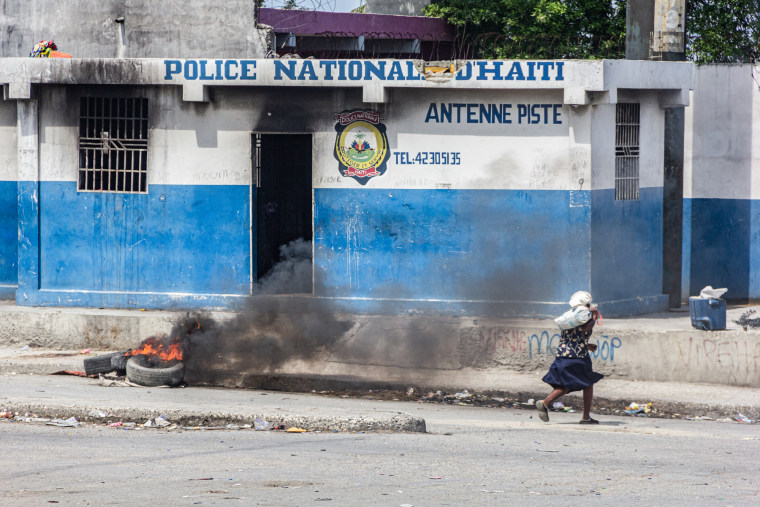
Now that Henry is to stand down, it is far from clear what the armed groups will do or demand next, aside from the right to govern.
“It’s the Haitian people who know what they’re going through. It’s the Haitian people who are going to take destiny into their own hands. Haitian people will choose who will govern them,” Chérizier said recently, according to The Associated Press .
Haitians and their supporters have put forth their own solutions over the years, holding that foreign intervention routinely ignores the voices and desires of Haitians.
In 2021, both Haitian and non-Haitian church leaders, women’s rights groups, lawyers, humanitarian workers, the Voodoo Sector and more created the Commission to Search for a Haitian Solution to the Crisis . The commission has proposed the “ Montana Accord ,” outlining a two-year interim government with oversight committees tasked with restoring order, eradicating corruption and establishing fair elections.
For more from NBC BLK, sign up for our weekly newsletter .
CORRECTION (March 15, 2024, 9:58 a.m. ET): An earlier version of this article misstated which university Jemima Pierre is affiliated with. She is a professor at the University of British Columbia, Vancouver, not the University of California, Los Angeles, (or Columbia University, as an earlier correction misstated).
Patrick Smith is a London-based editor and reporter for NBC News Digital.
Char Adams is a reporter for NBC BLK who writes about race.

IMAGES
VIDEO
COMMENTS
Scroll through these cause-and-effect lesson plans to get inspiration and grab some freebies too! 1. Make an anchor chart. As you introduce cause and effect, an anchor chart can help reinforce the concept. They're great to refer back to when reviewing and are helpful for kids to look at when working independently.
Label the first column 'Cause' and the second 'Effect'. Model for students on chart paper or board. Give a scenario for practice, such as a snowman melting and a big muddy yard. Have them place ...
The following is a useful template to follow when planning cause and effect focussed lessons in a whole class context. First, provide students with an overview of the story detailing the main events. Then, introduce the appropriate graphic organizer for the reading material chosen. While reading a text with the class, have students identify the ...
Objectives. In this unit, students will build upon Lesson 1 knowledge to begin drafting a cause-and-effect essay. Students will: analyze the thesis and supporting evidence in a sample cause-and-effect essay. research information for a cause-and-effect essay. understand the necessity of documenting research.
Cause and Effect. Idaho Language Arts Standards. NWEA DesCartes Statements based on RIT Scores. 3rd Grade Standard: 3.LA.2.1.2 Connect the information and events in texts to self, to the world, and to other texts. Content Limit: Assessed in the classroom, not on the ISAT. 191-200 RIT Scores.
Cause and Effect. Our Cause and Effect lesson plan teaches students strategies for identifying the cause and effect and how to employ it in their own writing. Students practice analyzing text for the causes and effects and writing paragraphs using a cause and effect. Categories: Downloadable, Reading, Video Tags: 3rd Grade, 4th Grade. Description.
In this lesson, students will be introduced to the main characteristics of cause-and-effect writing. Students will: contrast the commonly misused words affect and effect. differentiate types of causes that may impact an effect. read a cause-and-effect essay and analyze its structure through a graphic organizer. understand how to restrict a thesis.
Photocopy the Cause and Effect Diamante Writer's Checklist for each student. 1. Begin the lesson by asking students what they know about cause and effect. Pass out the Cause and Effect Definition Sheets or display them on the overhead projector. Discuss the definitions of cause and effect with students. 2.
Spread the loveIntroduction: Understanding cause and effect is a crucial skill for students to develop. It helps them comprehend the consequences of actions and events happening around them. To assist teachers in teaching this important concept effectively, we've compiled a list of 12 engaging cause-and-effect lesson plans that both educators and students will love. Let's dive in and ...
In this lesson, students learn cause-and-effect relationships through the sharing of a variety of Laura Joffe Numeroff picture books in a Reader's Workshop format. Using online tools or a printed template, students create an original comic strip via the writing prompt, "If you take a (third) grader to….". Students use various kinds of art ...
Overview. Expository texts are a key component of literacy but often do not get introduced to students until the later grades. This lesson helps third- through fifth-grade students explore the nature and structure of expository texts that focus on cause and effect. Students begin by activating prior knowledge about cause and effect; the teacher ...
Step 3. Students work in pairs to identify cause and effect relationships from a printed story or passage. Each pair makes a large chart of causes and effects found in the story. After all students are finished, the charts are displayed for all to see and discuss. More on cause and effect. The objective of this lesson is to help students ...
Introduction. (5 minutes) Model a brief cause and effect scenario for your class. Before you begin, ask students to get out a reading log or journal. Encourage students to jot down words, phrases, and observations of your actions. Guide students by writing the following prompting questions on the board to help them with their observations:
Outline your ideas. The best way to organize cause and effect writing is a web diagram. Draw a circle in the middle of your paper. Write either the cause or the effect. Writing the exact thesis statement is best. Draw lines from the center circle to at least three orbiting circles.
The best way to organize cause and effect writing is a web diagram: Draw a circle in the middle of your paper. Write either the cause or the effect. Writing the exact thesis statement is best. Draw lines from the center circle to at least three orbiting circles. Write either the causes or the effects, depending on how the essay is organized.
Step 1 "Explain" how recognizing cause and effect relationships in text will help students understand and remember what they are reading. For example, each action (cause) has consequent reactions (events) leading to an outcome (effect). Making these connections will help them remember events in a reading and why they happened.
Explain that in writing such an essay you need to list a lot of problems of a single cause (overcrowding) so a lot of cause and effect phrases are needed. Also you would need a lot of words which function as an alternative to the topic word, in this case, 'overcrowding'. (15 minutes) Be available to help as the students work through the ...
Causes and Effects in the Jimmy's Boa Books: This chart provides a handy guide to cause and effect in Noble's books. Book Rough Draft: Students use this graphic organizer to plan their cause and effect book. Book Handout: This page provides a place for students to draw a picture of the cause and the effect, as well as writing line for text.
Here are 12 lesson plans that make learning about cause and effect engaging and fun: 1. Chain Reaction: In this hands-on activity, students create a domino chain reaction. They explore how one action sets off a series of events and discuss the cause-and-effect relationships between each domino. 2.
The series of events between the mouse and boy began with the cookie the mouse ate. Ask students to turn and talk to their elbow partner about what happened after the mouse ate the cookie. Draw a T-Chart on the board and list the cause (e.g., the mouse ate the cookie) with the effect (e.g., the mouse wanted milk).
Cause and effect lessons for first grade are vital in developing and enhancing students' reading comprehension and critical thinking skills. Here is a great lesson plan about cause and effect for first grade that you can do in your own classroom! The steps are given, including suggestions on activities and exercises.
Lesson Plan for Grade 8 English. I- Objectives. At the end of the lesson, the students will be able to: a. Identify the cause and effect in a statement. b. Match the correct pair of cause and effect. c. Express ideas showing cause and effect based on the pictures. d. Construct sentences showing cause and effect relationship. II- Subject Matter
A Semi-Detailed Lesson Plan 5. English 5. I. Objectives At the end of the lesson, the learners are expected to a. identify causes and effects b. combine cause and effect clauses using a correct conjunction; and c. use complex sentences to show cause and effect. Participate in all Activities. II.
Francis Scott Key Bridge in Baltimore, showing the pier struck by the cargo ship and the sections of bridge which collapsed as a result. F Vasconcellos / Wikimedia, CC BY-SA. The fender is the ...
Chaos has gutted Port-au-Prince and Haiti's government, a crisis brought on by decades of political disruption, a series of natural disasters and a power vacuum left by the president's assassination.